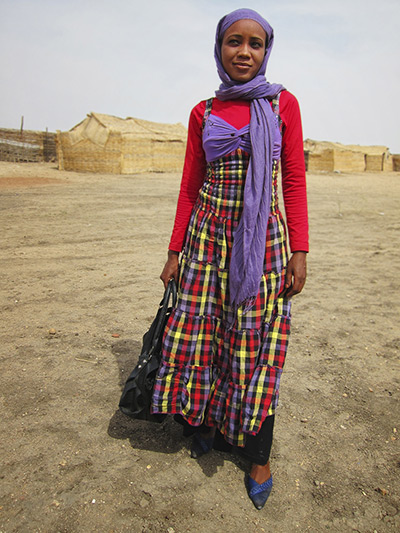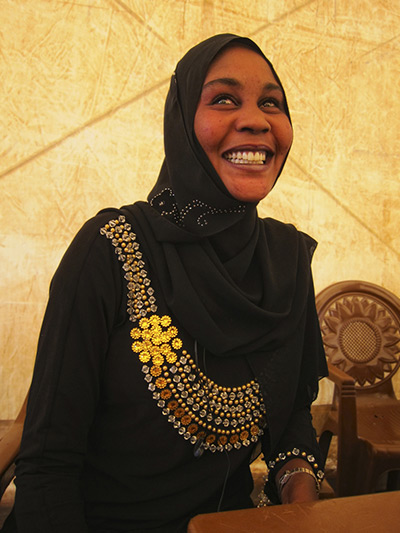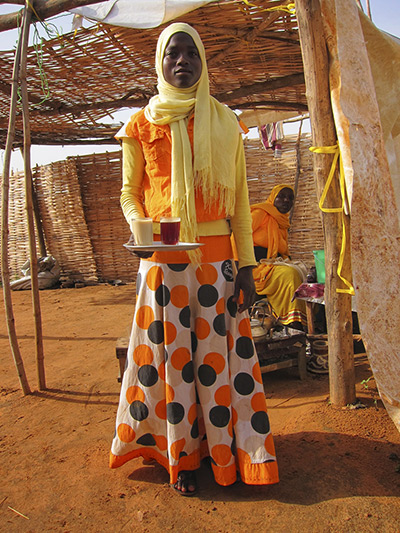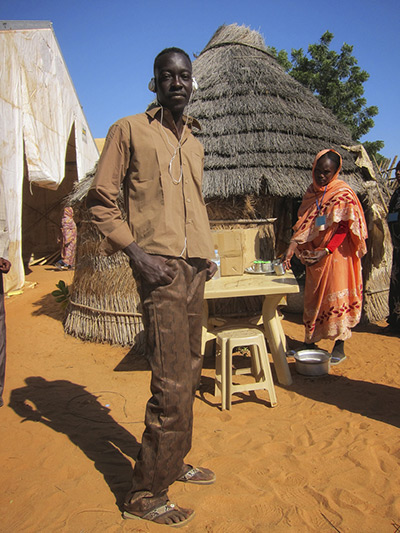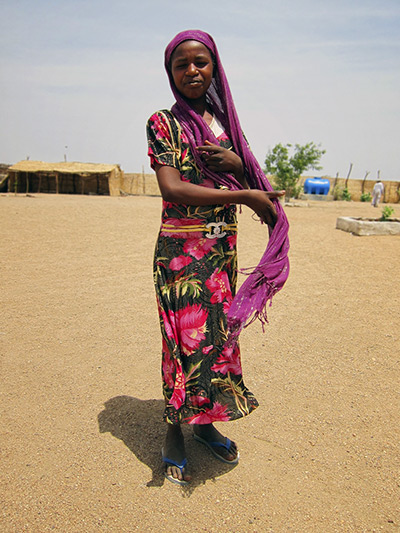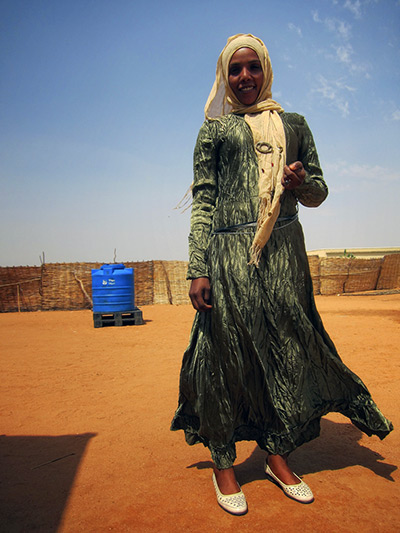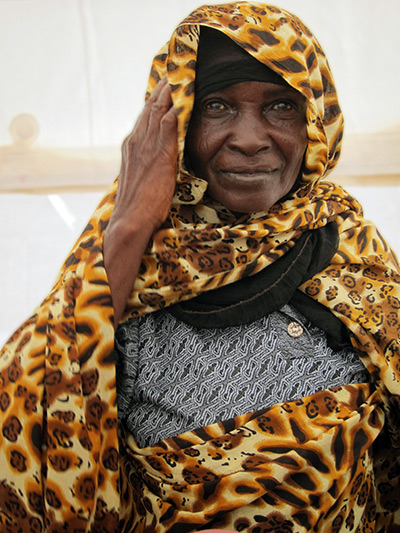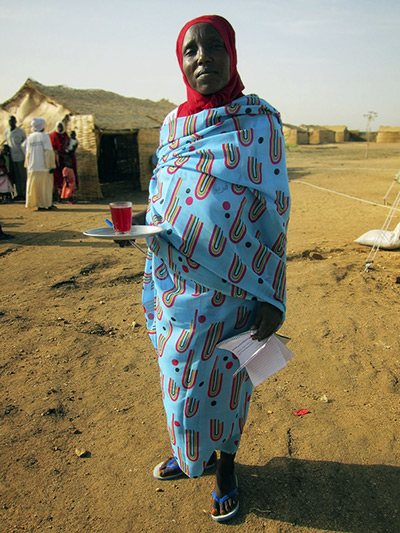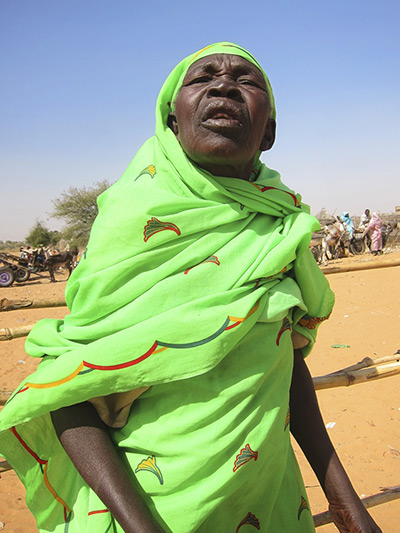![]()
Wednesday 27 March 2013
Darfur fashion – in pictures
Pedro Matos created the Darfur Sartorialist after being blown away by the sense of style he encountered on the streets of Sudan.
Fashion on the streets of Darfur
Pedro Matos created the Darfur Sartorialist after being blown away by the style he encountered in Sudan
Andreas Hansen and Karen Obling for Addis Rumble, part of the Guardian Africa Network
Fashion is not the first thing that comes to mind when thinking about Darfur. Pedro Matos, who has lived in the region for three years, is slowly changing this through The Darfur Sartorialist. We spoke to Matos about life is as a street photographer in Darfur.
Why is Darfur fashionable and what does the typical Sudanese fashion dress code look like for men and women?
The array of fabric patterns and the mix between the traditional abaya (arab tunic), the toub (many metres of colourful cloth wrapped around the body and head), and the westernised fashion made popular by Egyptian soap operas is incredible. You can find women combining tunics with Chinese-made Chanel belts, with orange denim jackets matching their headscarf, or with pointy high-heeled shoes in desert sand streets. Men’s fashion is considerably more dull. Most men will wear a white jalabiya with or without a turban, with white trousers underneath and white or leopard-pattern shoes. City people working in services (companies, public administration) will often wear a western outfit with pressed trousers and an untucked shirt in bland colours. Young people are now starting to show up in football shirts as a fashion statement.
What motivated you to start The Darfur Sartorialist?
I started the project when I realised that the Sudanese did not fit at all with my preconceived image of them. Women, in particular, were way more complex than the cliche of the oppressed, conservatively dressed, constantly fearing Muslim woman. Women in Darfur do not have the same opportunities or access to power as men, but in a way, it’s not that much different than in most of our countries. They are bound by cultural moral and societal codes, but they enjoy quite a lot of freedom in Darfur. I often dealt with women in mid-level positions in Sudanese ministries, the clothing was often quite bold, and there was a constant flirting between women and men in daily life.The project attempts to depict a little bit of that, while showing that the west is often bound by cultural codes (albeit different ones) that self-censor us into never dressing in certain ways. Finding an 80-year old woman dressed in bright orange or green would be frowned upon in most of the west, and there’s a few of those in The Darfur Sartorialist collection. That is not to say that Sudan is a freer country than most, it is not. But as Muslim countries go, women and men enjoy one of the most free environments to mix and to express themselves through clothing. And that’s what The Darfur Sartorialist aimed to depict, without any judgement from my side that would attempt to contextualise the pictures. I try to leave the surprise and questioning to the viewer.
Who are the people you portray and what is your relationship with them?
All photos are of residents in Darfur, often internally displaced people living in camps or Darfuris working with humanitarian agencies assisting them. I found it interesting that it is not always easy to distinguish which one is which. I know most of the people depicted in the photos, either because they were working with me, or because I spent a long time in the camps and became friends with some of the residents.
Taking photos in Sudan can be tricky and dangerous. How did you go about the official restraints and did you experience any skepticism or reluctance from the people you approached with your camera?
It’s true that the government of Sudan does not particularly like foreigners going around taking photos. The list of things that may be considered sensitive is so long, one is bound to eventually run into government officials questioning you for photographing. Eventually, I spent so much time working side by side with people from the security services that a cordial relationship developed. After that point, the suspicion reduced considerably and that’s when most of the photos were taken.
What or who has surprised you most in the work with The Darfur Sartorialist?
The women with some of the boldest colour and clothing combinations I have ever seen, and the fact that it is almost impossible to see two women with the same outfit. In our western world of fashionable dark colours and standardised Mango, Zara and H&M, we forget how many possibilities for clothing combinations lie open before us.
The founder of the Sartorialist blog, Scott Schuman, now does features on fashionable and well-dressed people from across the globe and he recently visited South Africa for the first time. Do you have plans to shed new light on other countries or regions that, like Darfur, suffer from negative stereotypes and misconceptions?
I am not sure yet… I am not a professional photographer and there are people out there photographing the known reality much better than me. I felt the need to launch The Darfur Sartorialist because I thought it was a story waiting to be shown, and a side of the reality the media never tells, with it’s constant depiction of Africa and the Muslim world under the same light. If I don’t find the same type of untold stories elsewhere, I will simply enjoy the photos of professional photographers showing the reality I see in a much more beautiful way than I could possibly could.
>via: http://www.theguardian.com/world/2013/mar/27/darfur-fashion-streets-sudan

